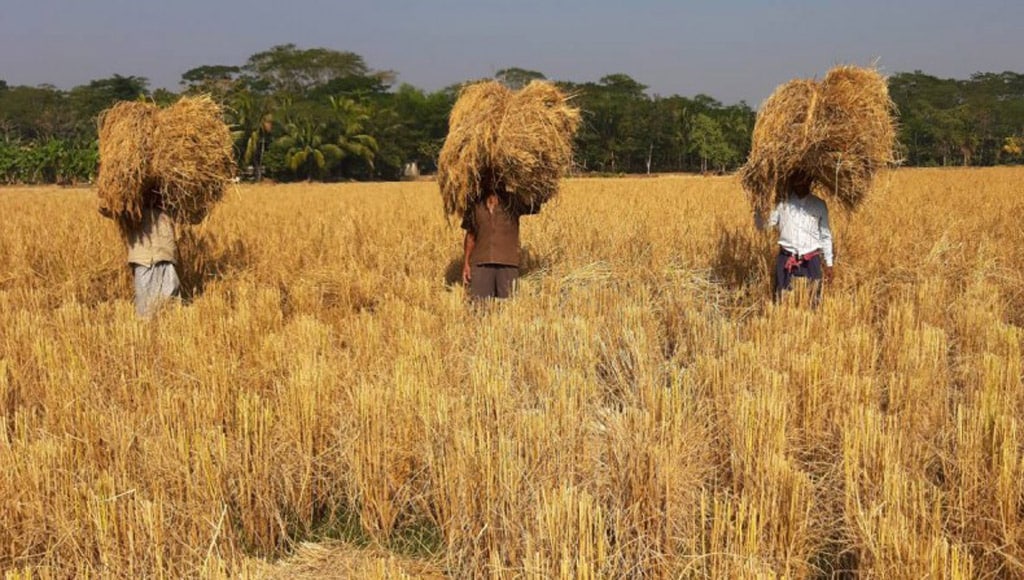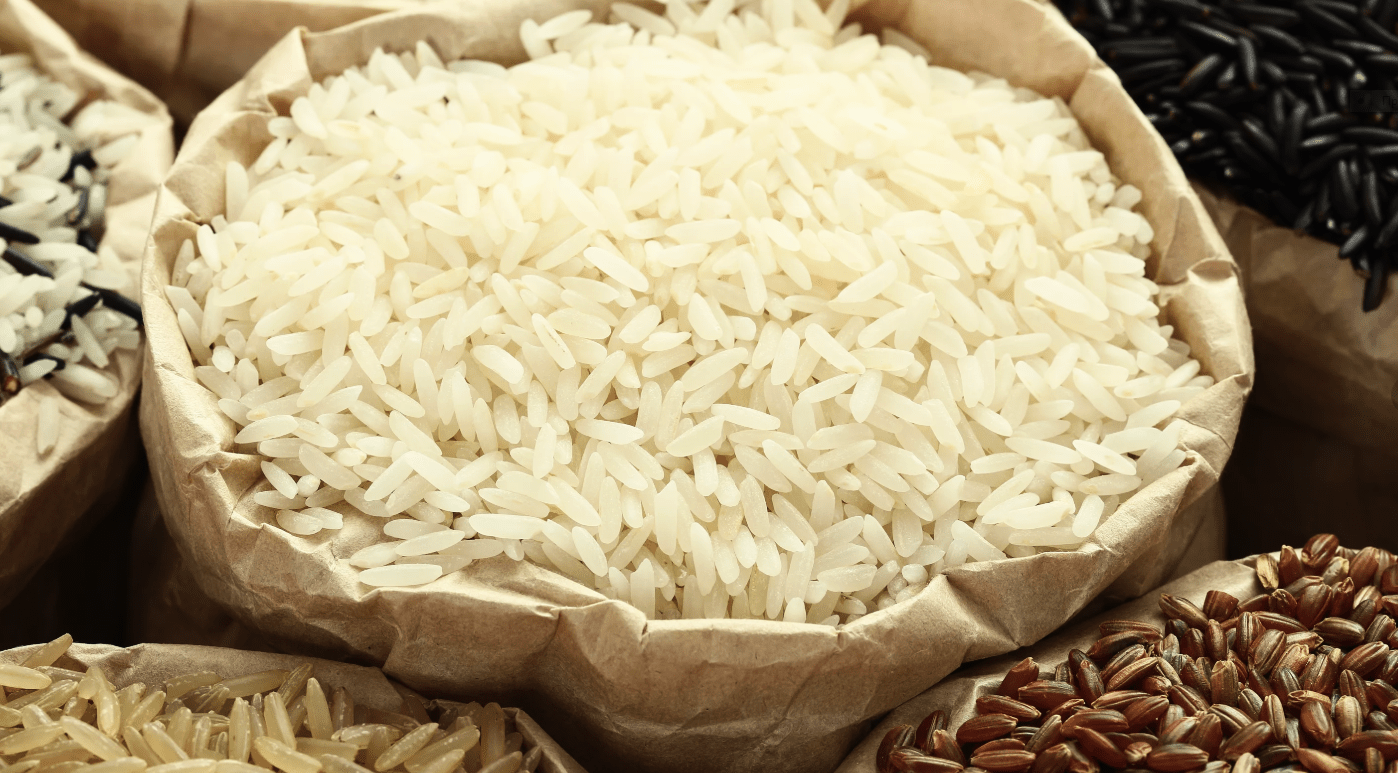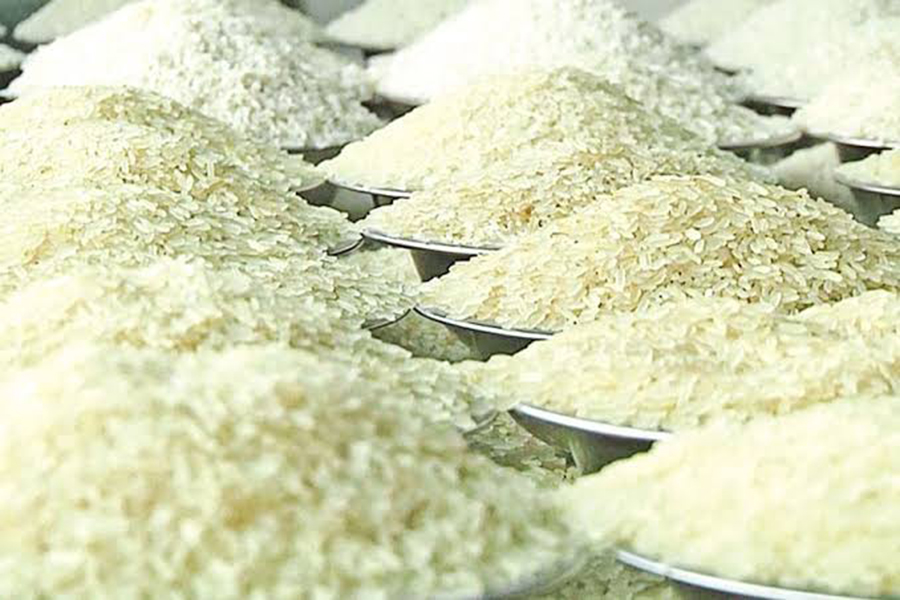Tags
Heatwaves, droughts threaten rice yields in Bangladesh

Bangladesh faces immense challenges in keeping up its rice production amid frequent heatwaves and droughts in the absence of heat-tolerant rice varieties and the low yield of unpopular drought-tolerant varieties that the country has.
Over the years, the state-owned Bangladesh Rice Research Institute developed 115 rice varieties, largely focusing on increasing yields, apparently under the same favourable weather conditions.
The improved varieties have increased Bangladesh’s rice production by about three-and-a-half-fold since 1971, a remarkable achievement crucial for feeding the country’s millions of people.
Bangladesh produced about 4 crore tonnes of rice in 2023, up from 3.1 crore tonnes in 2010.
Some adjustments, such as advancing planting times and irrigating fields more than ever before, have kept rice production intact amidst harsh weather conditions in recent years, agriculturists said, pointing out that these temporary solutions cannot hold it for long and that a fall in rice production is inevitable.
While temperatures kept soaring, the need to lift more groundwater for rice cultivation left vast swathes in desert-like conditions, rendering them unable to produce other crops such as fruits and vegetables as well, agriculturists said, creating a greater economic and nutrition crisis.
‘Food and nutrition security is clearly under threat unless new crop varieties capable of withstanding increased temperatures and droughts are developed,’ said professor ASM Golam Hafeez, who teaches agricultural economics and rural sociology at Bangladesh Agricultural University.
‘Otherwise, food inflation cannot be checked. Heat will reduce production on the one hand and increase labour and irrigation costs on the other,’ he explained.
Bangladesh recorded its longest-ever heatwave of 37 days starting from the last day of March this year, with day temperatures frequently exceeding 40C over vast swathes in central and northern areas, the main rice grain-producing areas.
The second-longest heatwave of 23 days occurred last year when many areas saw day temperatures reach record or near-record levels.
A heatwave occurs when the day temperature reaches or exceeds 36C, which is considered excessively hot for living beings.
Bangladesh is currently in the grip of yet another heatwave that began five days ago.
On Friday, the country’s highest maximum day temperature of 39.6C was recorded in Chuadanga with a fresh two-day heat alert issued by the Bangladesh Meteorological Department.
Officials in the BRRI said that Bangladesh’s rice varieties best perform in the temperature range of 20C to 30C. Days getting hotter than 33C during the flowering stage could trigger sterility in paddies, depleting rice production.
Khandakar Iftekharuddaula, head of the plant breeding division, BRRI, claimed that Bangladesh was very close to having its first-ever heat-tolerant rice variety.
‘It might take two more years,’ he said.
The eight drought-tolerant varieties released since 2011 are not at all popular with farmers, who cultivate varieties imported from India or depend on frequently irrigating their fields.
‘Rising temperatures have already put Bangladesh in a precarious situation. The rice cultivation calendar is no longer as it used to be,’ said Iftekhar.
Bangladesh cultivates three major types of rice – boro, aus and aman. While boro accounted for more than half of all rice production, aman accounted for 40 per cent of all rice production, and aus 8 per cent.
Boro is planted in winter but harvested in early summer when temperatures rapidly rise. In 2021, standing boro crops covering over 21,000 hectares were destroyed after a hot spell of wind blowing for three hours left paddy fields scalded in over a dozen districts in early April.
Boro, an irrigation-intensive crop, has only one drought-tolerant variety, BRRI 92, which was cultivated in 4.15 per cent of areas where rice was cultivated last year, according to the Department of Agricultural Extension.
Aus, a summer-season rice, usually planted between March and May and harvested between July and August, has only four drought-tolerant varieties – BRRI-42, BRRI-43, BRRI-83, and BRRI-98. The drought-tolerant varieties were released between 2004 and 2020.
The adoption rate of BRRI-42 dropped from 1.93 per cent in 2018 to 0.84 per cent in 2022 while the adoption rate of BRRI-43 dropped from 2.90 per cent in 2017 to 0.96 in 2022. The varieties of BRRI-83 and BRRI-98 are not cultivated anywhere.
The summer rice cultivation area was reduced by two-thirds compared with 1972. Aus production, however, increased due to the development of high-yielding varieties.
Aman, on the other hand, is planted in two periods – between March and April and June and July. Aman is a rain-fed crop, but it has faced serious challenges because of both excessive rain and temperatures over the past few years. Aman is harvested between October and December.
Aman has three drought-tolerant varieties – BRRI 56, BRRI-66 and BRRI-71. The adoption rate of BRRI 56 hit 3.18 per cent in 2022, while BRRI 66 was not cultivated in the field. The BRRI 71, released in 2015, reached an adoption rate of 0.73 per cent in 2022.
A drought-tolerant variety is somewhat heat-tolerant. The BRRI 71 is the most potential variety, which can survive without rain for up to three weeks during the flowering stage. But its adoption is very poor.
‘Farmers use locally released varieties less because they have access to better-performing varieties from India,’ said Siddikur Rahman, a senior scientific officer of agricultural economy at BRRI.
Some DAE officials seeking anonymity said that the performance of drought-tolerant varieties is not the same as described by the BRRI.
High temperatures and droughts impact rice plants at every stage of their growth. The higher the temperature, the more the rice plant uses its energy to cool off rather than forming grain. High temperatures and drought also dry up the sticky substance on which pollen is stuck in the process of pollination.
BRRI officials explained that the temperature staying above 36C even for a very brief period could seriously hamper flowering, particularly between the hours of 9:30am and 11:30am.
The BRRI advises farmers to maintain a water depth of five to seven centimetres in rice fields when a heatwave blows.
A recent study released by the BMD revealed that heatwaves became more frequent from late March to October in much of Bangladesh, particularly after 2000.
The report also revealed that the temperature also increased across all seasons between 1980 and 2023.
During the longest heatwave, the country’s highest day temperature of 43.8C was recorded in Jashore on April 30, the hottest day in over three decades.
Districts such as Chuadanga and Jashore saw day temperatures stay at 40C or above for almost three weeks between mid-April and early May.
Day temperatures frequently exceeded 40C in Dhaka, which saw its peak at 40.5C on April 30, the second hottest day in the capital in the past 64 years.
https://www.newagebd.net/post/Country/235446/heatwaves-droughts-threaten-rice-yields-in-bangladeshPublished Date: May 17, 2024






